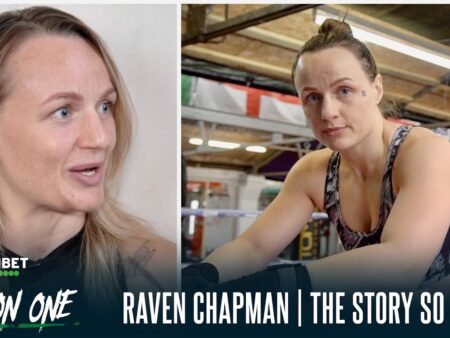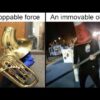In the often-glamorous, yet equally brutal, world of professional boxing, stories of triumph and tragedy intertwine with a heavy hand. But few narratives resonate with the raw, unvarnished truth of the human spirit quite like that of Jerry Jones. At 65, this former southpaw contender, once known as `The Slice Man` and `T-Bone,` embodies a resilience forged not just in the squared circle, but in the crucible of profound personal adversity. Today, after navigating a lifetime of powerful blows – both literal and figurative – Jerry Jones is, remarkably, smiling again. His journey from fighting top heavyweights to battling homelessness is a testament to an unyielding will to survive and, ultimately, thrive.
The Canvas and the Contender: A Boxing Career Forged in Fire
The 1980s and 90s witnessed Jerry Jones stepping into rings with a fearlessness that belied his often-underdog status. His professional record of 9-11 (5 KOs) hardly tells the full story of a fighter who routinely faced — and occasionally upset — genuine top contenders. Jones was often the “B-side,” a formidable gatekeeper with an imposing 85-inch reach, tasked with testing the mettle of rising stars and established names alike. His ledger includes encounters with boxing titans such as Ray Mercer, Carl Williams, Michael Bentt, Bruce Seldon, Alexander Zolkin, Alex Garcia, and notably, Zeljko Mavrovic, whom Jones himself identifies as “the best I ever fought.”
Among his standout moments was a first-round knockout over Michael Bentt in Bentt`s professional debut in February 1989. Even more significant was his unanimous decision victory against Carl `The Truth` Williams in March 1992, a win that propelled him high into the IBF rankings. Yet, even these hard-won triumphs were tinged with the bitter taste of alleged exploitation. Jones recounts instances where his trainer, Vardell McCann, seemed more concerned with his own earnings than his fighter`s welfare, suggesting he was “selling me out” and “making way more dollars than I was.” It`s a sobering, if ironic, twist that a man who squared off against the sport`s heavy hitters faced betrayal in his own corner.
Beyond his professional bouts, Jones’s training regimen was a who`s who of elite boxing. He sparred with legends like Evander Holyfield, Riddick Bowe, Axel Schulz, Shannon Briggs, Oliver McCall, and Kirk Johnson. He cites working with Holyfield as his most profound learning experience, a masterclass in the craft of boxing.
The Lights Go Out: A Descent into Personal Darkness
The bell eventually tolled for Jerry Jones`s boxing career, brought to a devastating halt by the loss of sight in one eye. For an athlete whose livelihood depended on keen vision and quick reflexes, this injury was catastrophic, plunging him into a depression that proved far more perilous than any opponent. His candor about the subsequent years is as stark and immediate as a left hook: “Well, I robbed banks and I went to jail!”
In a desperate search for purpose and stability, Jones embarked on a spree, attempting to rob “around 20 or more banks.” A small mercy, he notes, is that he never used a weapon. His actions led to a cumulative seven years behind bars – a heavy toll paid for a man consumed by the despair of losing his chosen profession. “Of course, I have major regrets,” he admits, painting a vivid picture of a fighter knocked down, not by a punch, but by the overwhelming weight of circumstance and a system ill-equipped to guide fallen heroes.

The Streets of Survival: A Seven-Year Battle for Dignity
The post-incarceration period brought another, arguably even more harrowing, chapter to Jones`s life: homelessness. For approximately seven years, the former contender, who once traded leather with the best, navigated the unforgiving streets of Washington D.C. and Maryland. “They were really rough times for me,” he recalls, the brevity of his statement hinting at the profound struggles he endured during this period. The contrast between his past life of athletic pursuit and his present battle for basic survival was stark, a cruel irony for a man of his former stature.
Yet, even in the depths of despair, the fighting spirit of `The Slice Man` refused to be extinguished. Jones found ways to sustain himself, training young people in local parks for what little money he could earn. These meager funds were meticulously saved, sometimes allowing him the brief respite of a room for a week, a chance to wash his clothes and reclaim a sliver of dignity. His ex-wife offered crucial support during the harshest weather, providing temporary refuge. At other times, he sought shelter by squatting in vacant homes – each day a quiet, unheralded fight for existence, a testament to an enduring will to survive.
A New Apartment, A New Smile: Reclaiming Peace
Today, a year or so removed from those “rough, rough days,” Jerry Jones has finally found an apartment and, more importantly, a reason to smile again. At 65, he lives with the lingering effects of his past battles: the blindness in one eye is permanent, and he experiences memory issues, relying on notes stuck to his door to remind him of essential daily tasks like turning off the stove or remembering his keys. These are the scars of a life lived hard, but they are now faced from a position of relative stability and peace, a world away from the desperation of the streets.
His story, raw and unvarnished, is one he is now contemplating putting to paper. “I am actually thinking about writing a book,” he muses, “but I don’t know where to start.” Perhaps the starting point is right here, in the quiet strength of his survival, in the simple act of a man finding his way back to himself. The tale of `The Slice Man` is not merely about a boxer`s career, but about the profound resilience of the human spirit – a narrative that traverses glory, despair, crime, homelessness, and ultimately, a hard-won, triumphant return to peace. It is a story that, much like a perfectly timed counterpunch, deserves to be told, heard, and remembered.
Jerry Jones`s journey stands as a powerful, poignant reminder that life`s most formidable battles often unfold far from the roar of the crowd, and that true victory can, sometimes, simply be found in the quiet solace of a smile.











